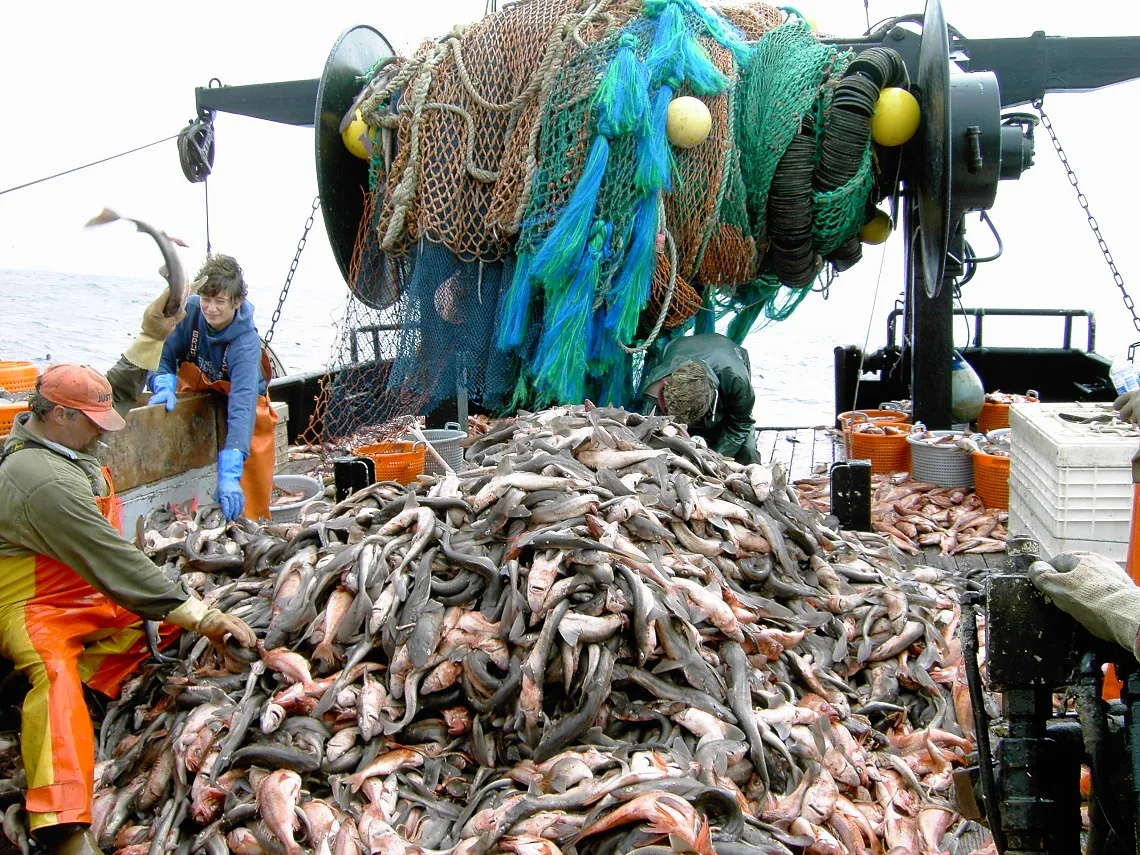Brussels – The goal is to make EU fisheries more sustainable, the means is a new, strengthened EU-wide control system. As of today (Jan. 9), revised rules on preventing exploitation of resources and ensuring a level playing field between different EU sea basins and fleets are in effect. “We want to ensure better protection of our precious marine resources and enforcement of fisheries control rules along the entire chain, from net to plate,” commented the European Commissioner for the Environment, Oceans and Fisheries, Virginijus Sinkevičius.
By revising the Regulation on how fishing activities are monitored—both for EU vessels and those fishing in the territorial waters of EU member states—Brussels aims for alignment with technological developments and harmonized penalties for those who violate the Common Fisheries Policy. The new provisions call for the monitoring of fishing activities to be fully digitized. All fishing vessels will be tracked through a vessel tracking system (VMS) and all catches will have to be recorded electronically. To ease the burden on fishermen, tools such as applications on mobile devices will be used. Digital traceability will be mandatory along the supply chain, starting with fresh, frozen, and aquaculture products (including imported ones) and gradually extending to processed fish products, such as canned goods. Enforcement of the releasing obligation (of bycatches) and that of remote electronic monitoring (with on-board cameras) for vessels over 18 meters in length will also be strengthened.
 New rules are planned for the imported fishery products, notably the mandatory use of the CATCH tool to submit catch certificates for import into the EU. “CATCH simplifies the catch certification process” for fish products entering the single market and “offers a fully digitized and paperless workflow,” the EU Commission explains in a note. It also “facilitates the exchange of data, information, and documents between all commercial parties involved and control authorities, simplifying and speeding up administrative procedures.” Thanks to the CATCH tool, the effectiveness of the catch certification scheme under the Regulation on products from illegal, unreported, and unregulated fishing will be improved.
New rules are planned for the imported fishery products, notably the mandatory use of the CATCH tool to submit catch certificates for import into the EU. “CATCH simplifies the catch certification process” for fish products entering the single market and “offers a fully digitized and paperless workflow,” the EU Commission explains in a note. It also “facilitates the exchange of data, information, and documents between all commercial parties involved and control authorities, simplifying and speeding up administrative procedures.” Thanks to the CATCH tool, the effectiveness of the catch certification scheme under the Regulation on products from illegal, unreported, and unregulated fishing will be improved.
The amended regulations that came into force on Jan. 9 provide transitional provisions to give EU fishing authorities and other stakeholders time to adapt to the new requirements. Most of the rules will apply in two years—starting Jan. 10, 2026—while exemptions to the margin of tolerance will apply from July 9, 2024. Remote electronic monitoring, electronic tracking, and catch registration for artisanal fleets will apply only after four years (starting Jan. 10, 2028), “as their implementation may require some preparatory work,” the EU executive points out. A few other provisions—such as those on traceability of prepared and preserved fishery and aquaculture products or seaweed—will apply after five years (from January 10, 2029).
English version by the Translation Service of Withub



